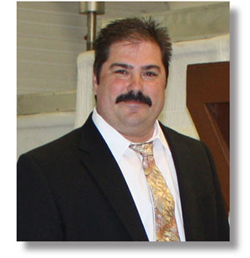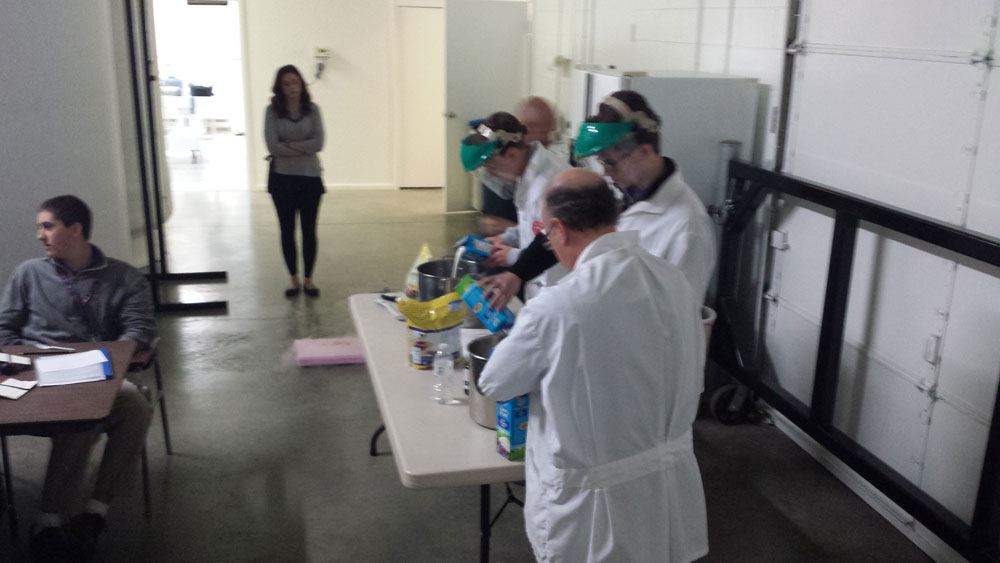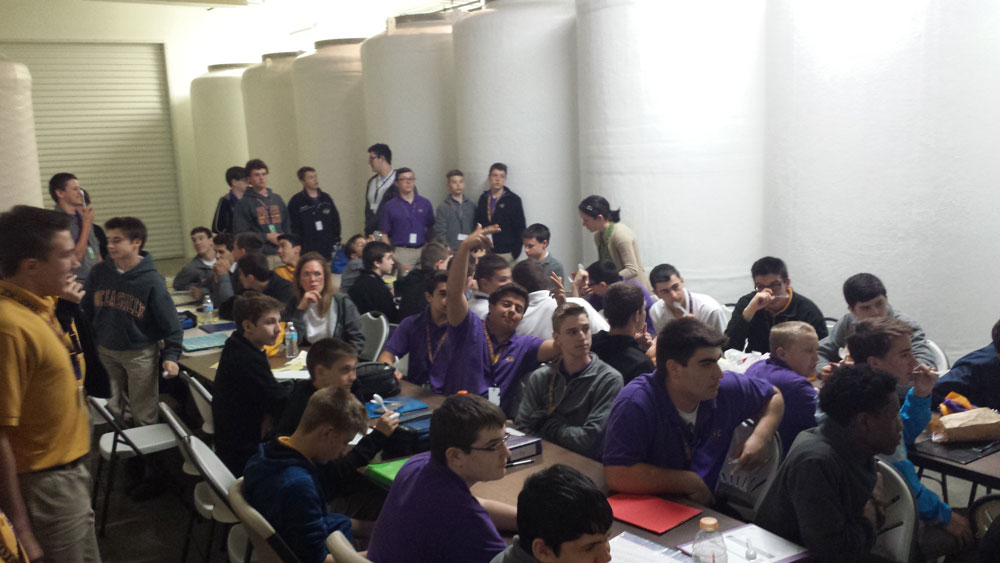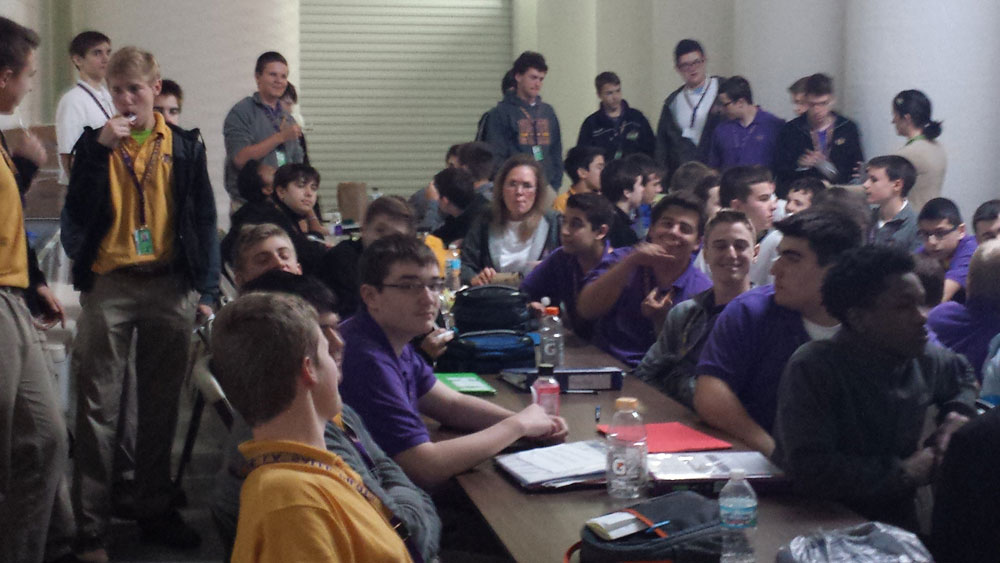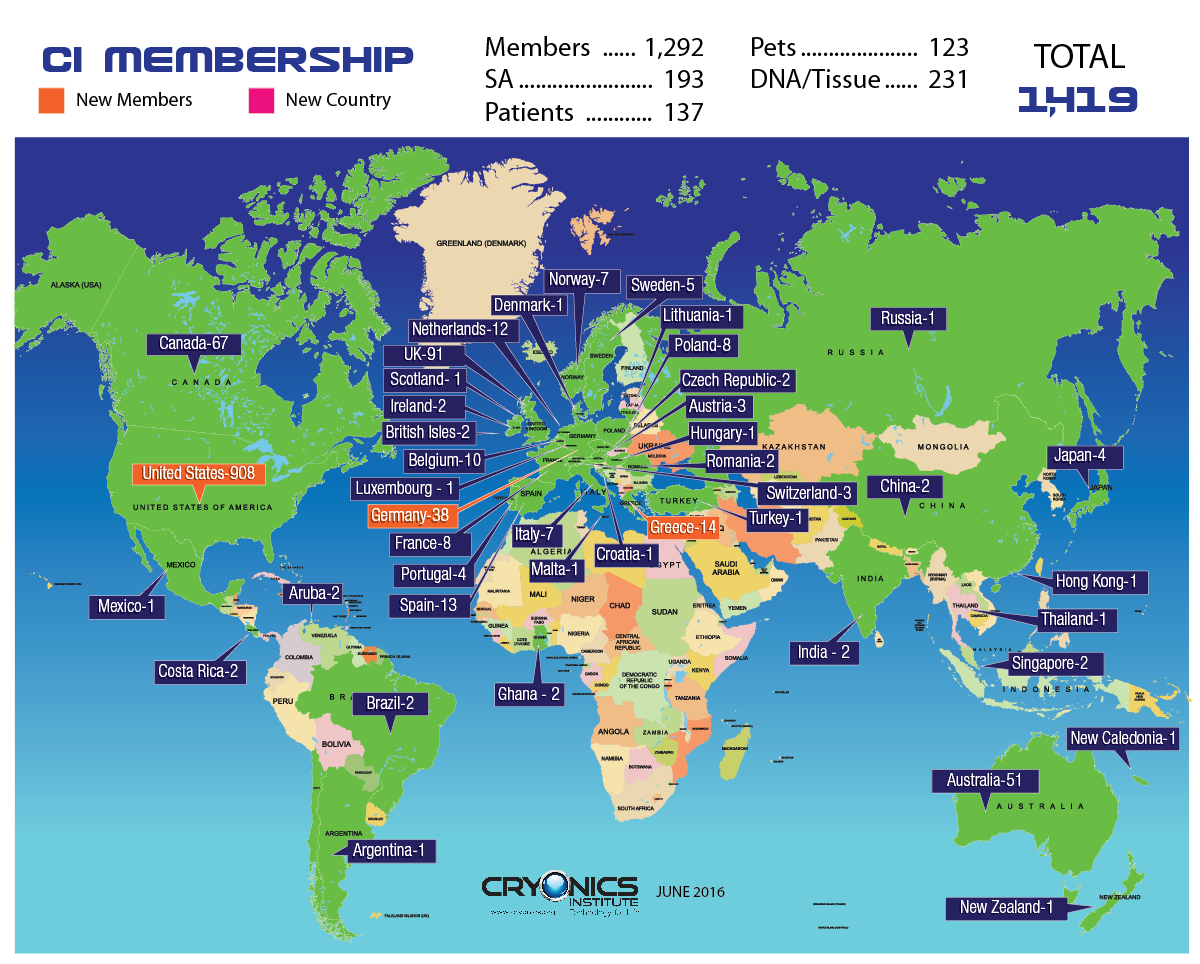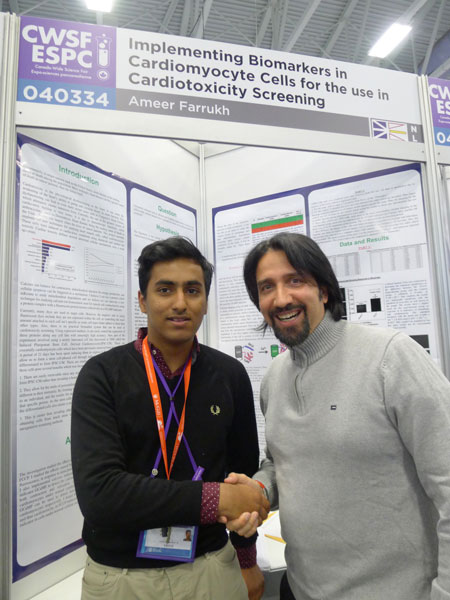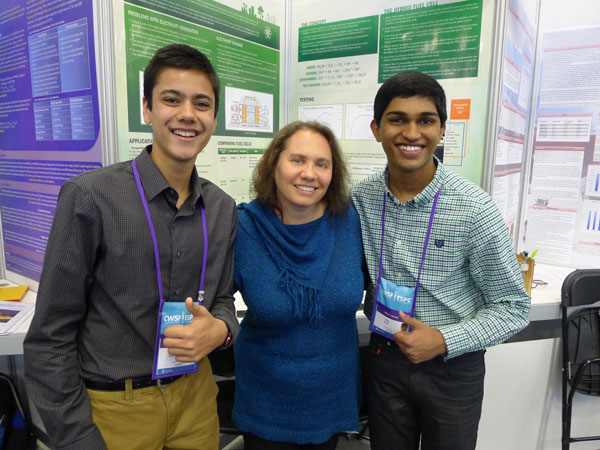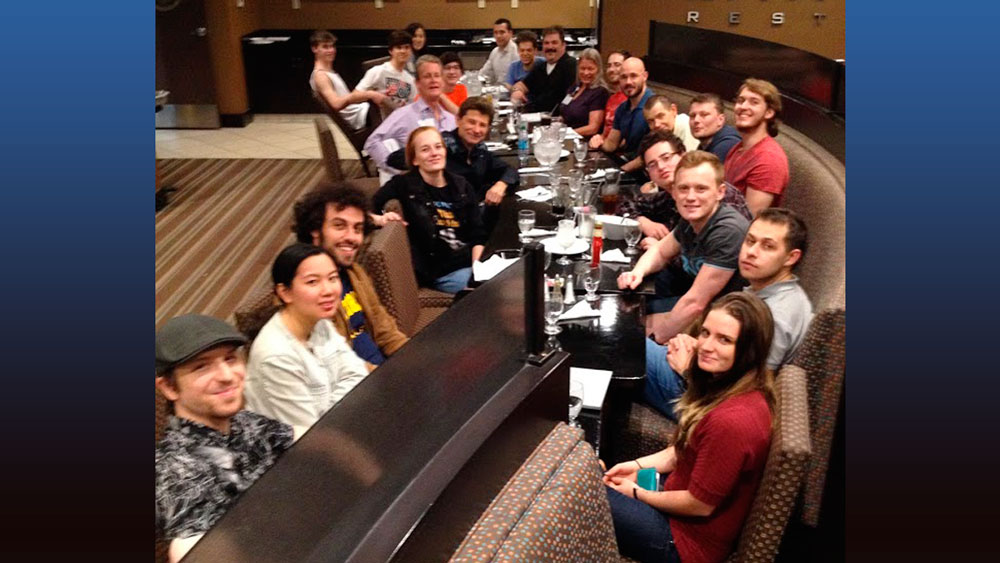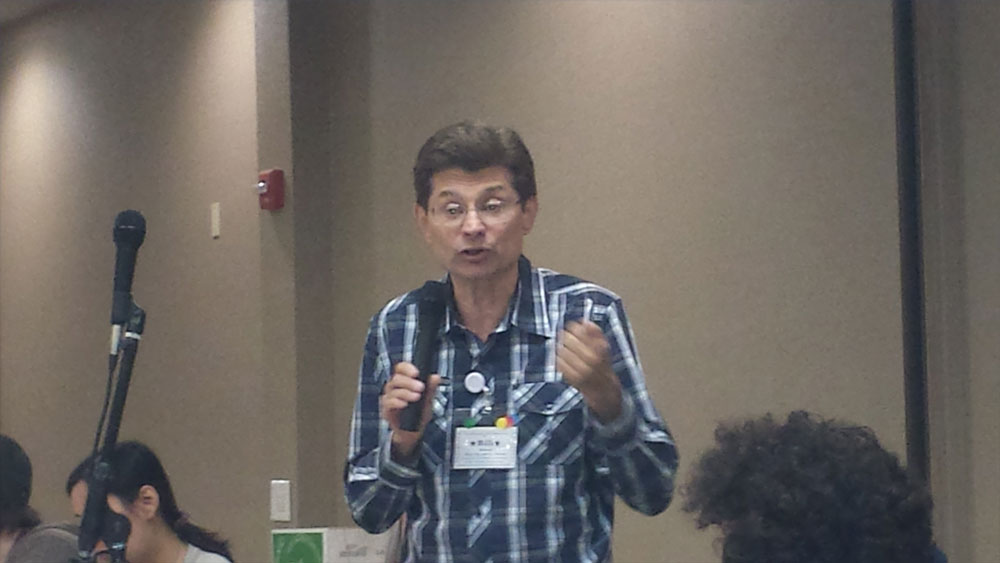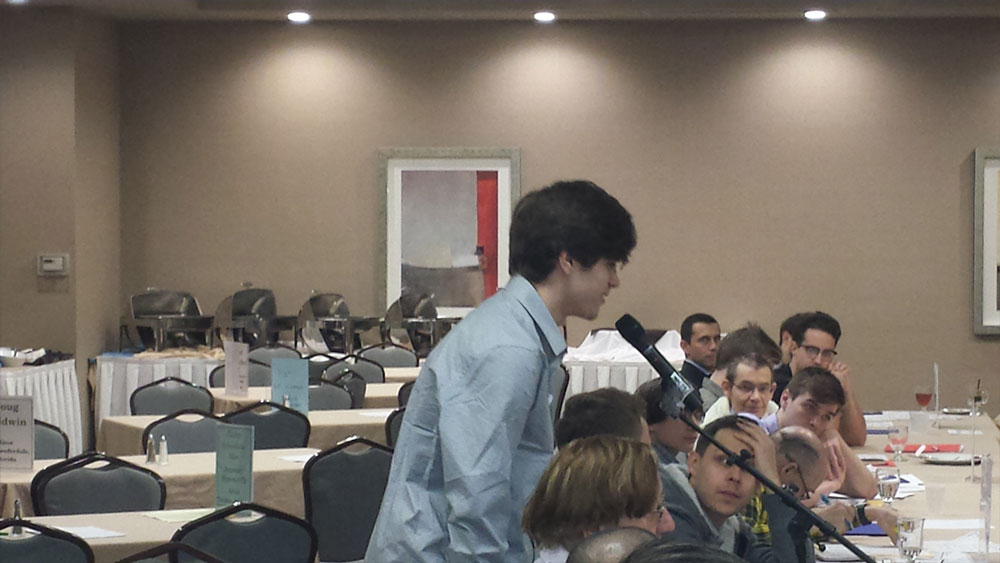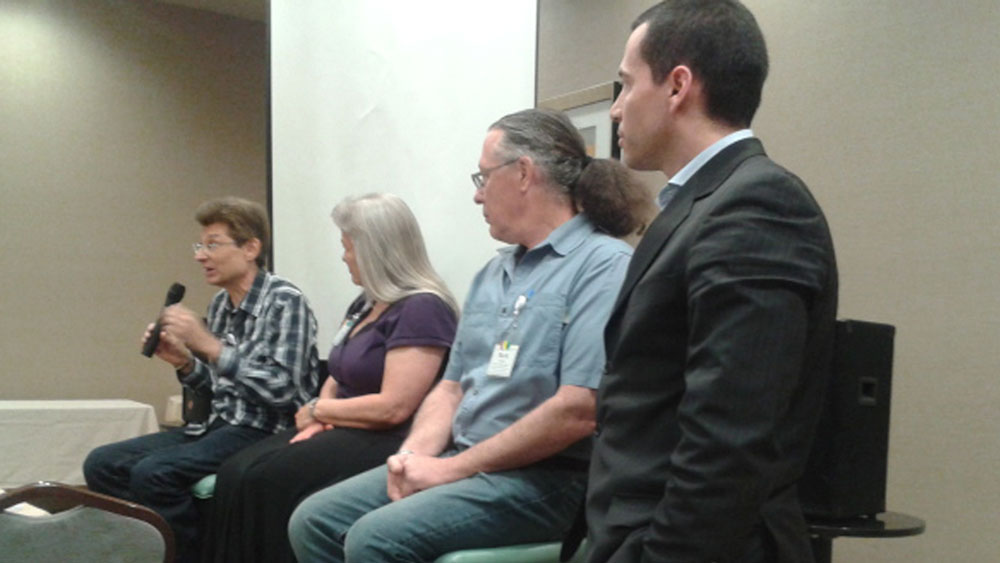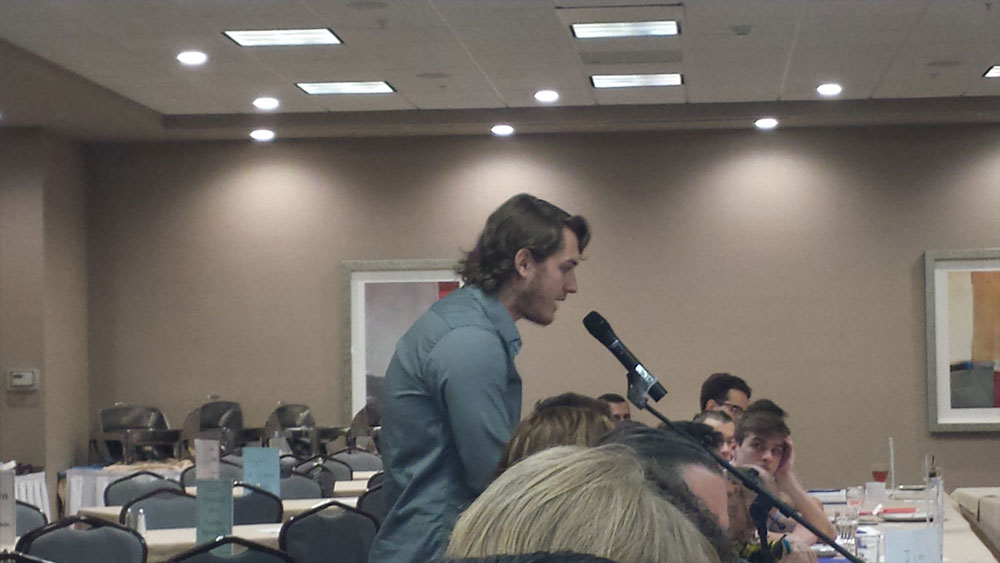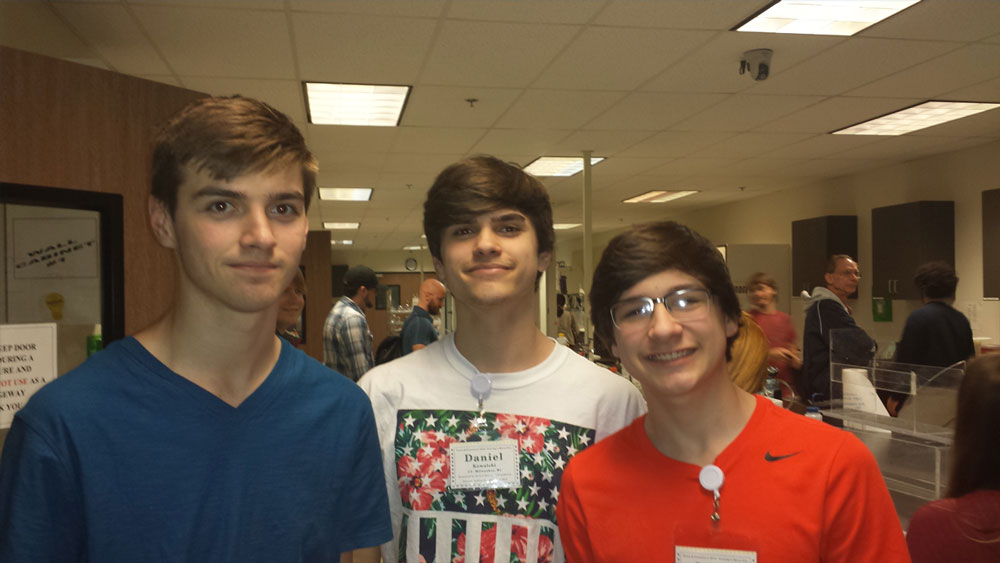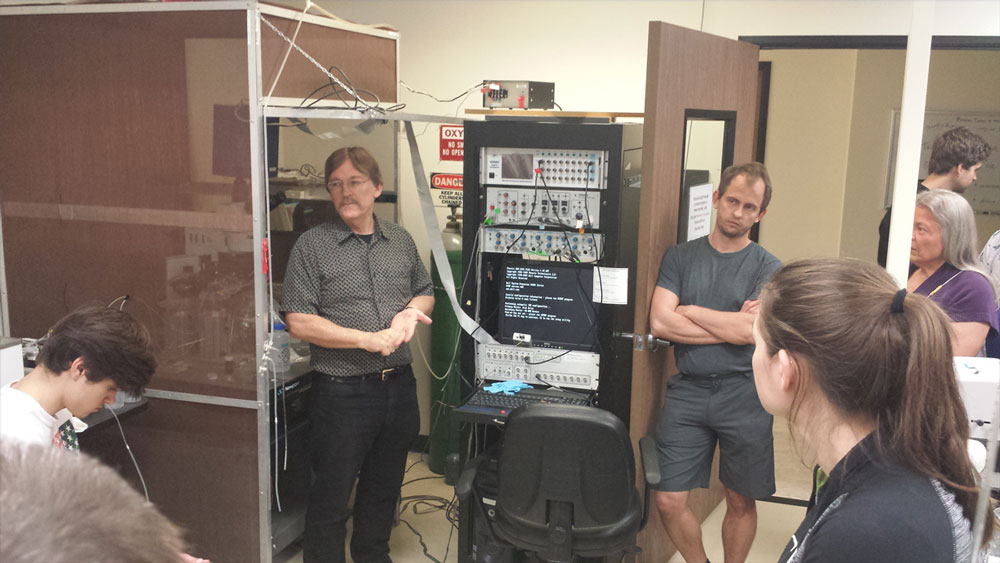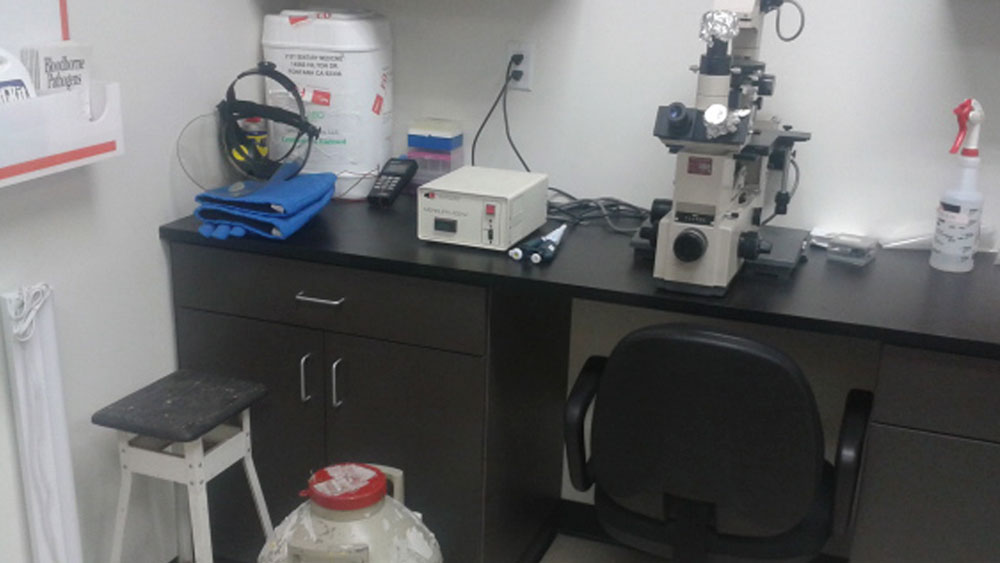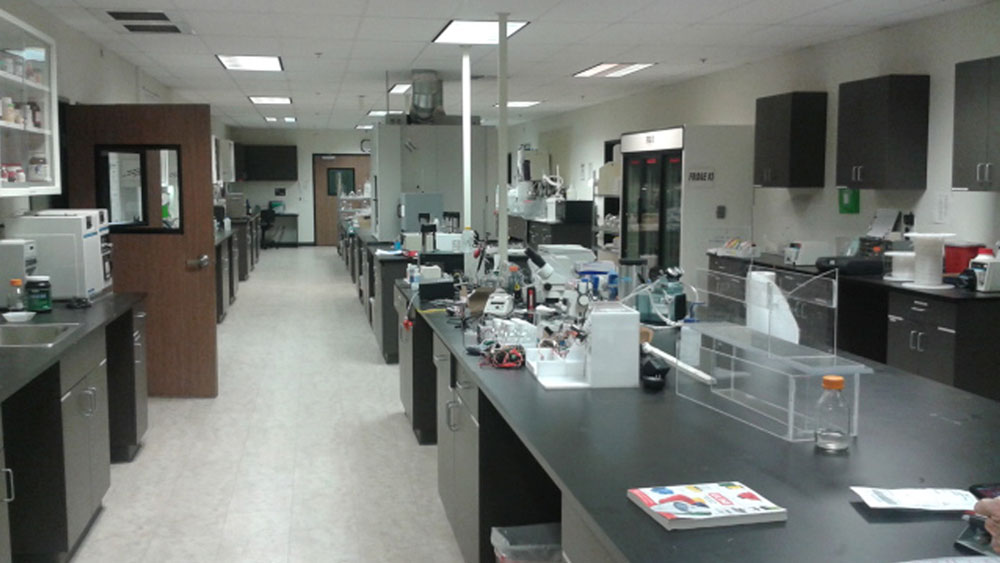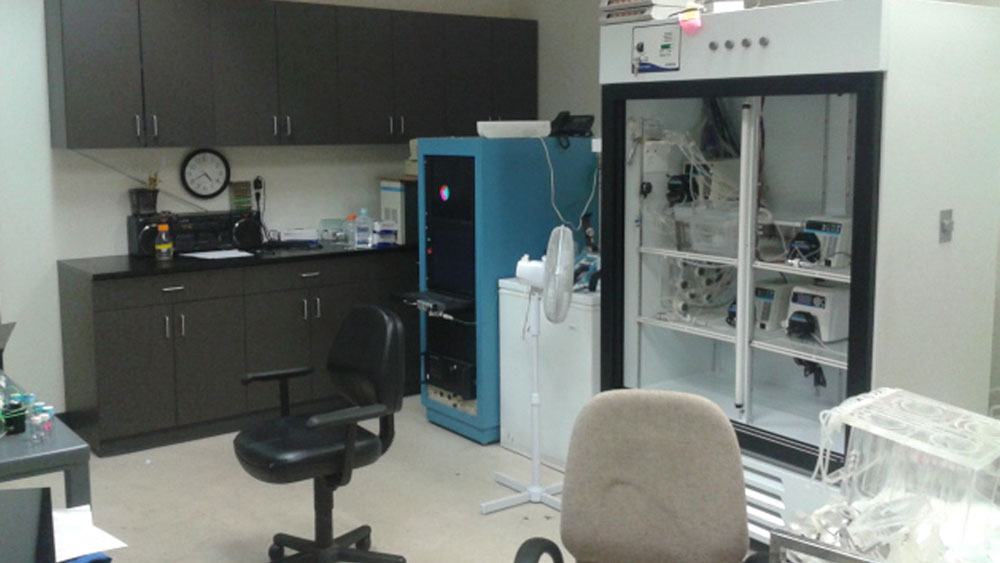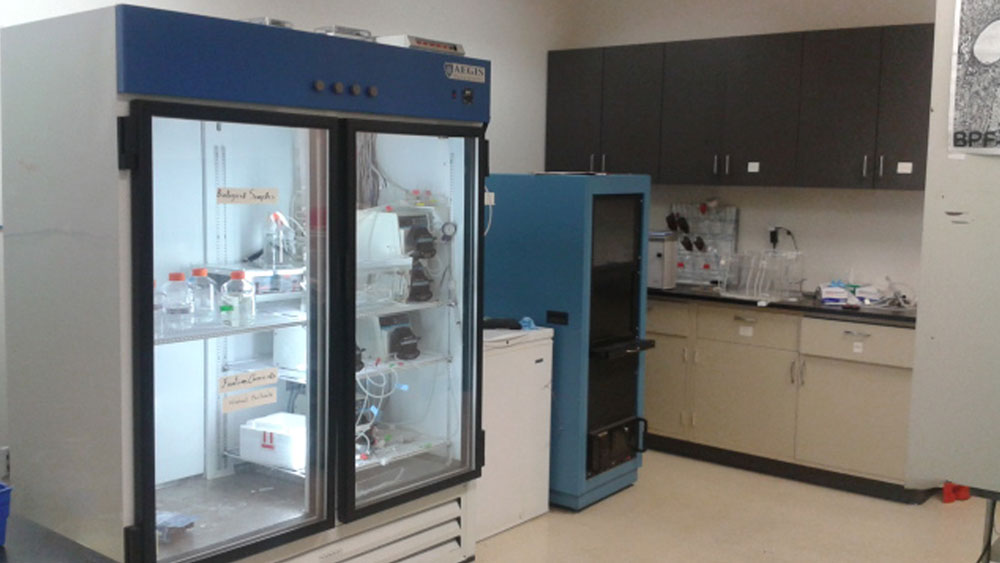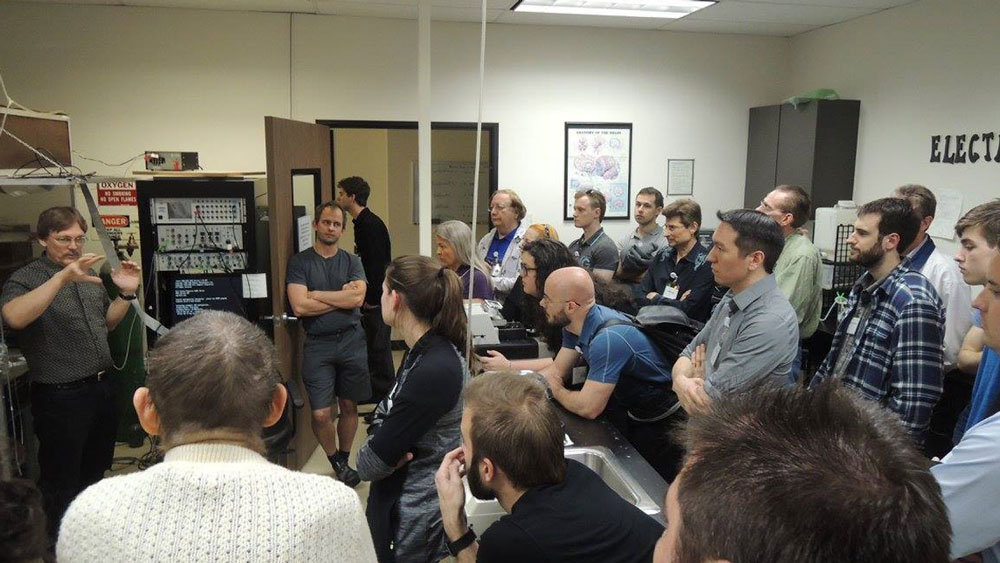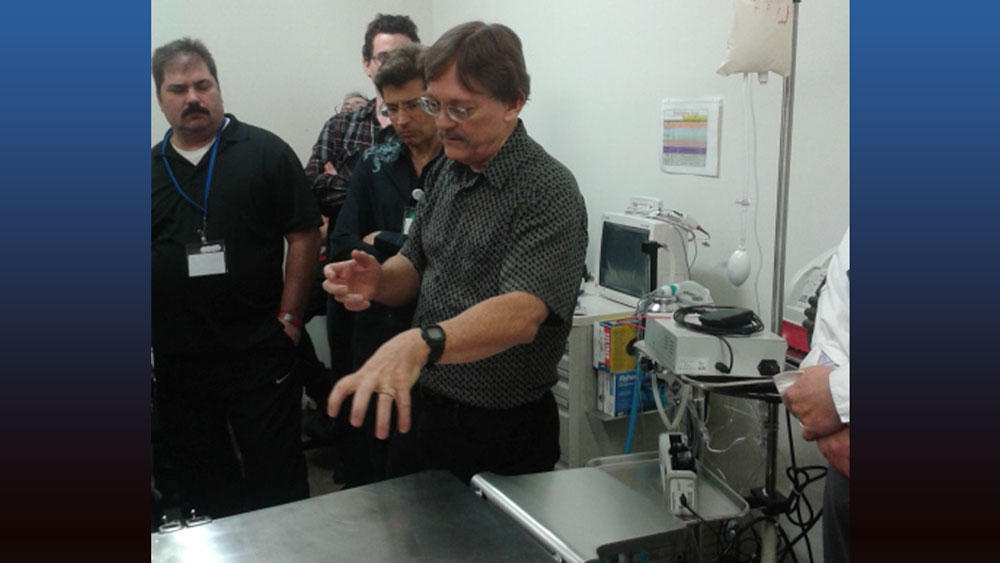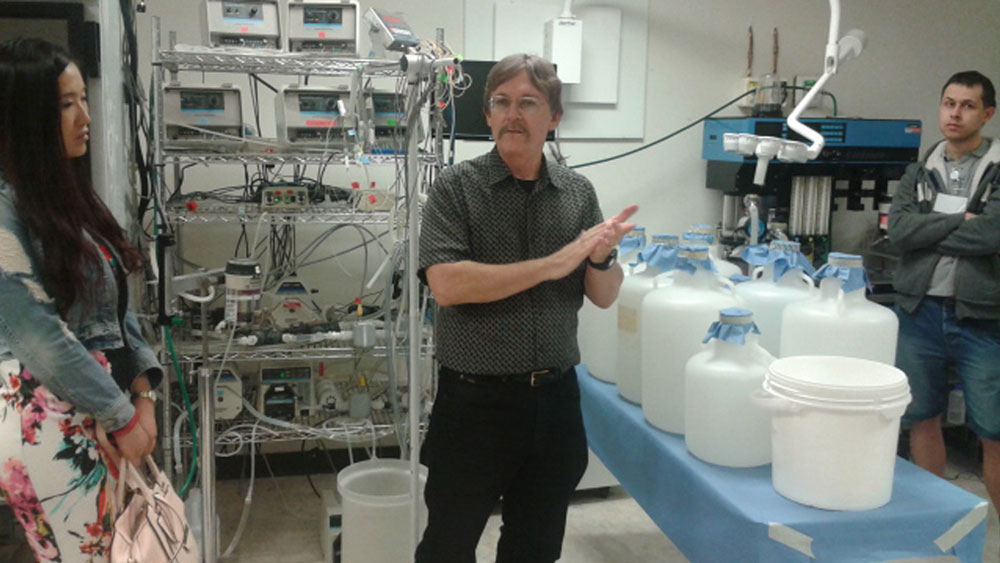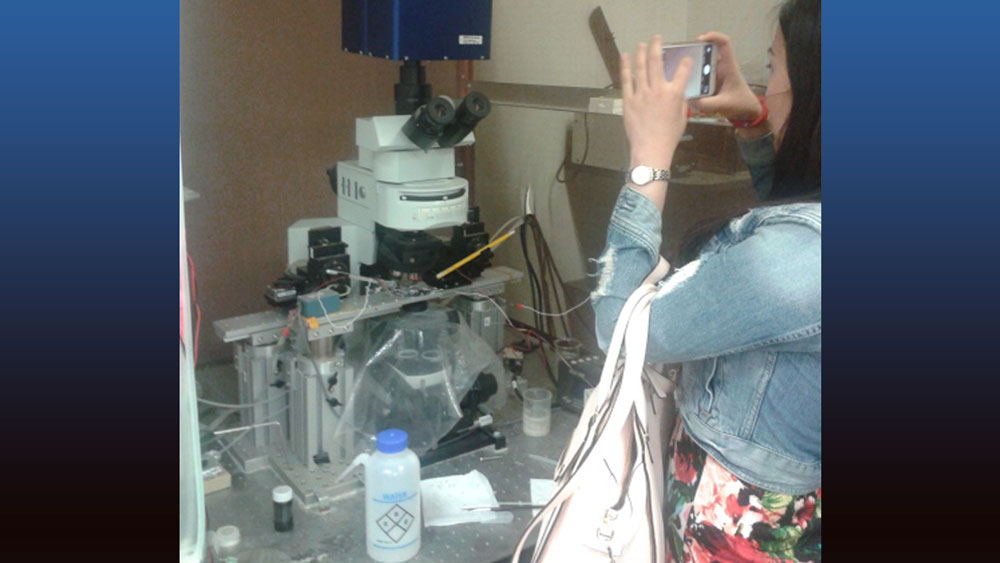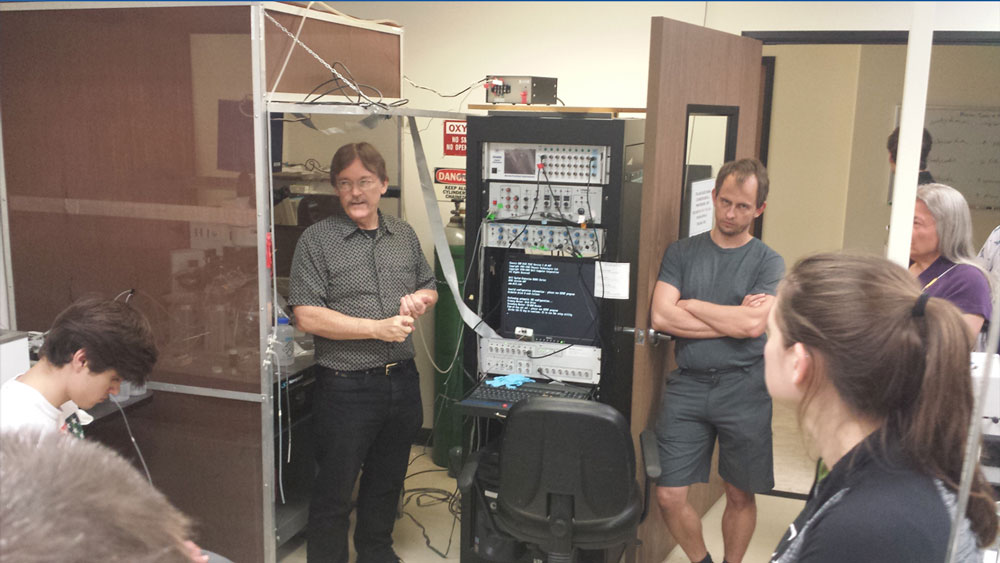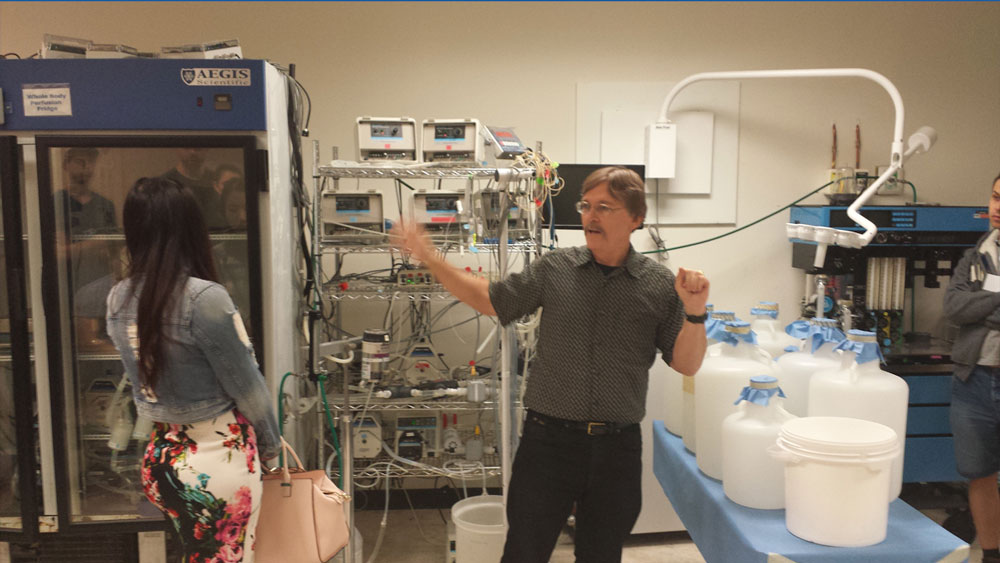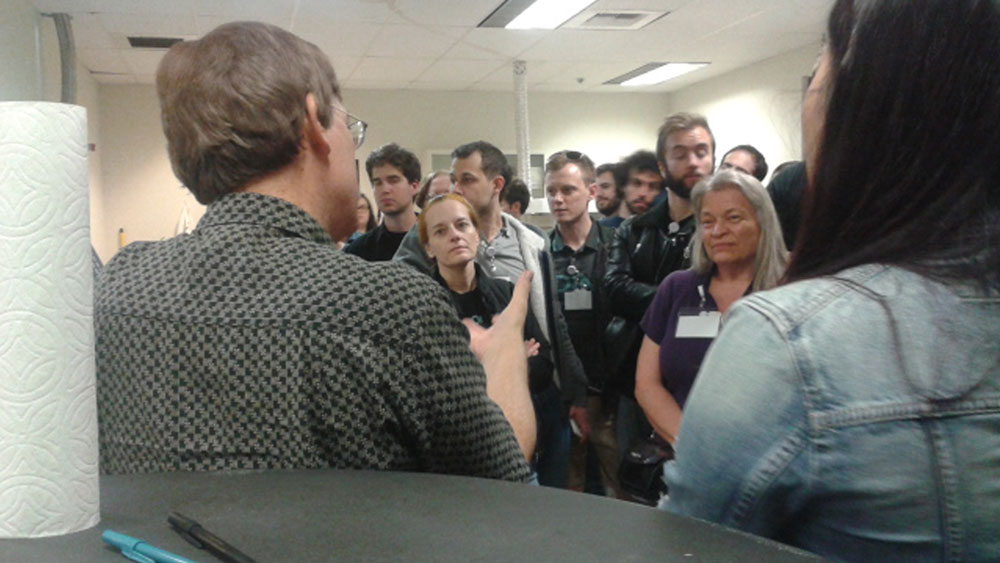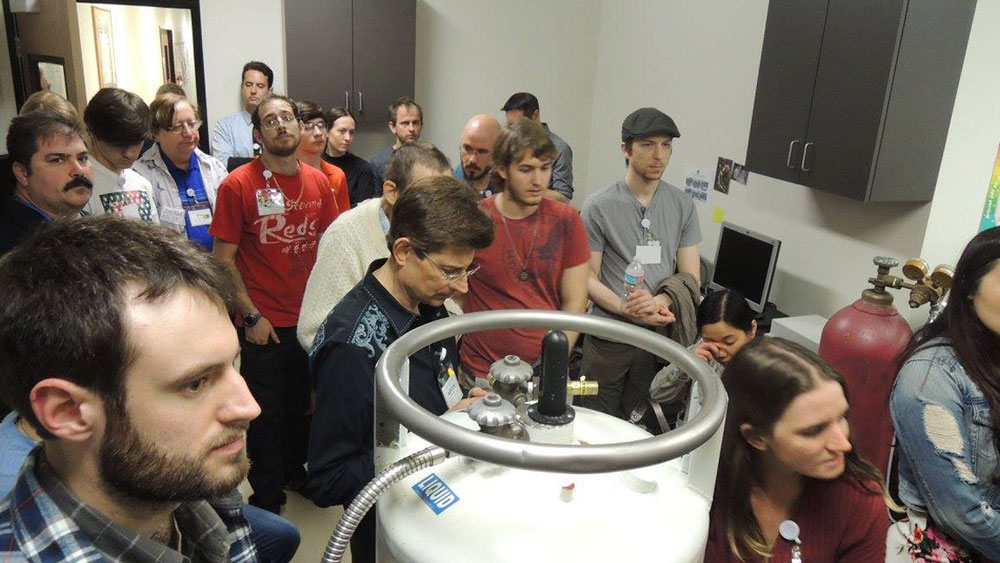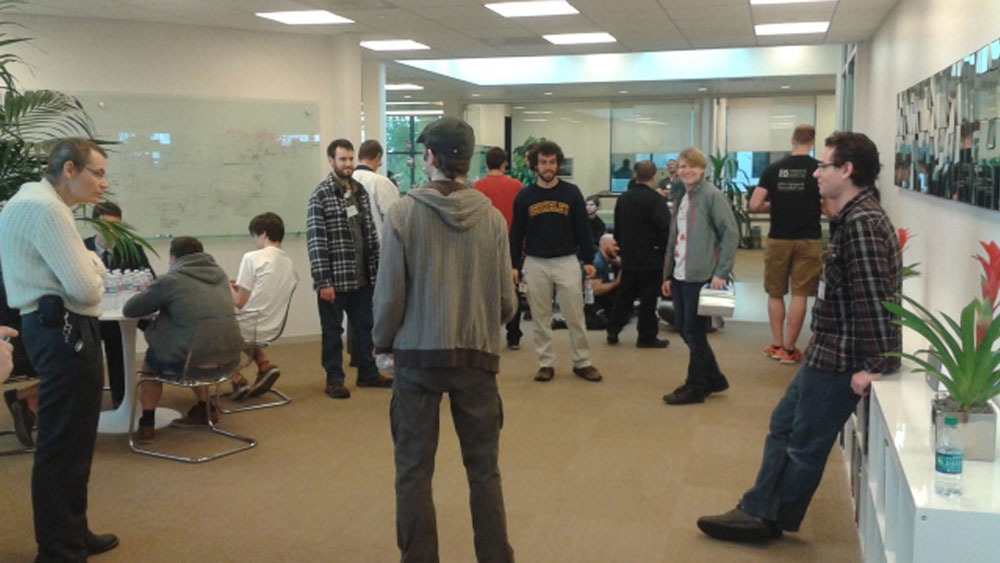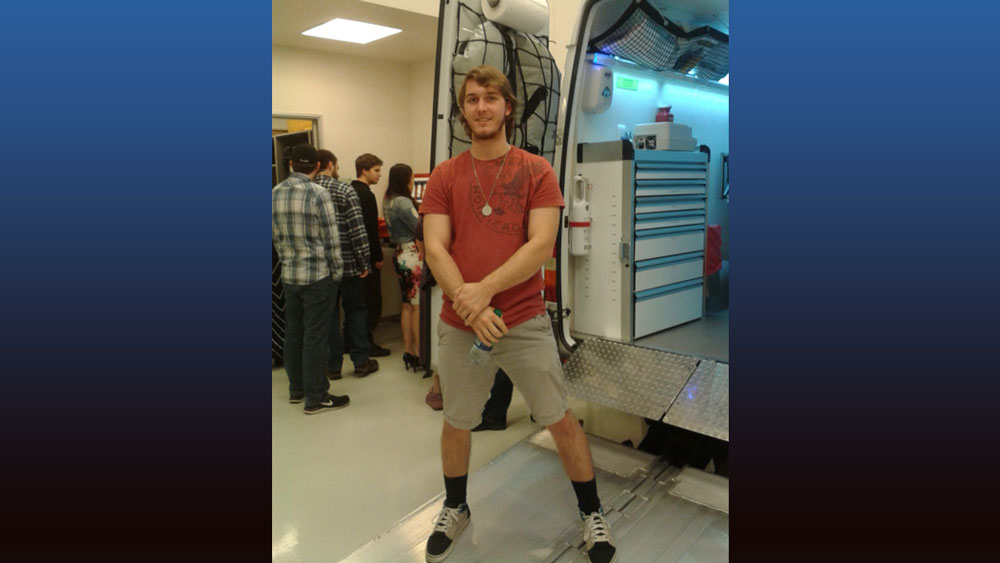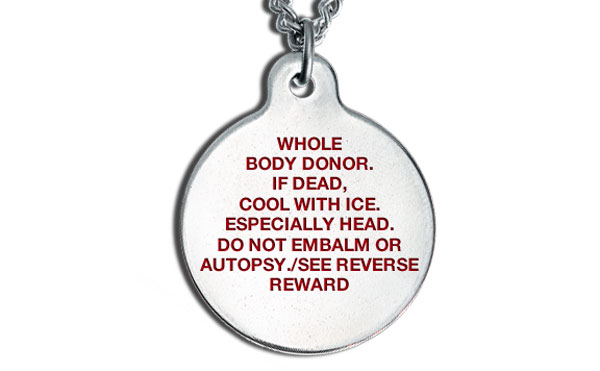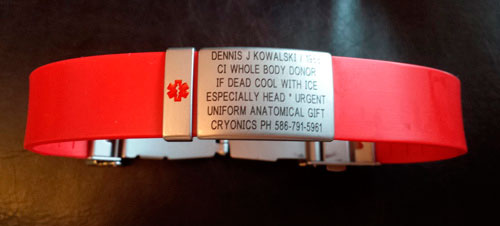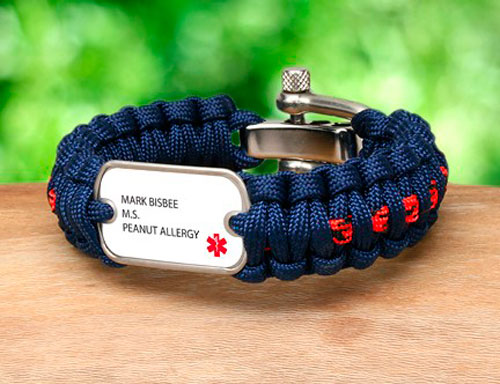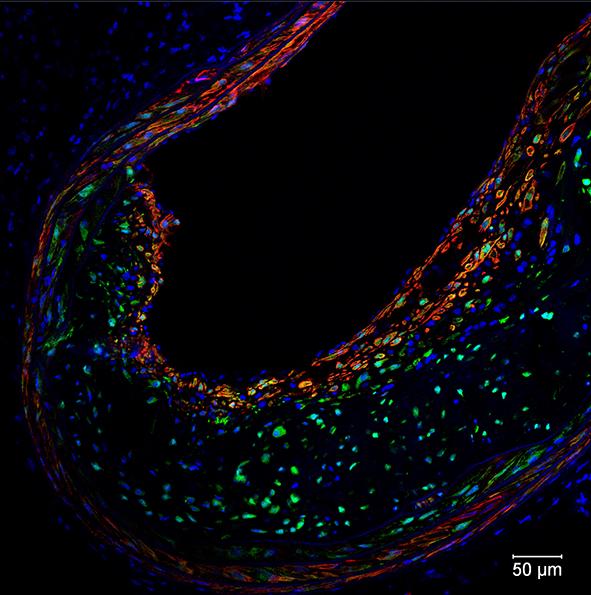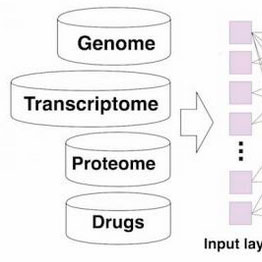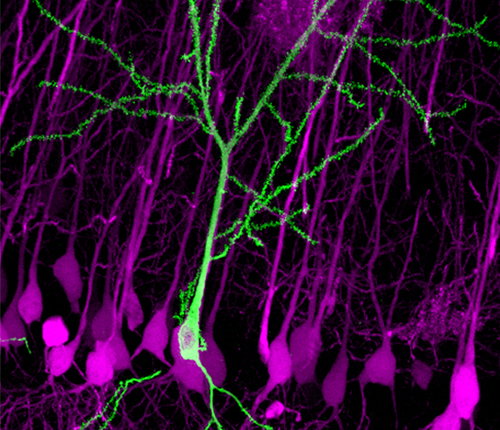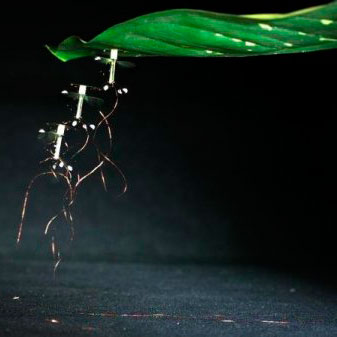The sexual superwoman may be riddled with cleverly designed orifices of various kinds, something like a wriggly Swiss cheese, but shapelier and more fragrant; and her supermate may sprout assorted protuberances, so that they intertwine and roll all over each other in a million permutations of The Act, tireless as hydraulic pumps. (We may have hydraulic pumps, if we are cyborgs.) A perpetual grapple, no holes barred, could produce a continuous state of multiple orgasm. (Of this, more later.)
A little too vulgar? All right: those who choose spiritual expression of supersex may never touch each other at all, except with tender tendrils of the mind. Each could represent the distilled essence of feminine or masculine personality, and quiver with exquisite joy at an exchange of precisely the right word or glance, and after every such thrilling encounter retire for decades to analyze and relish it in prose, poetry, song, drama and fingerpaints before readying for the next.
Is this too far out also? No-the sober probability is that the above examples are too conservative: supersex could, and likely will, be much stranger. Before exploring the more zestful options, however, let us look briefly at the null possibility.
Super Neuter?
Is sex here to stay? Some moderately good arguments can be advanced against it. Certainly the need for coitus in reproduction is already unnecessary, since we know about artificial insemination. Soon a race exclusively of women will be viable, through techniques of artificial parthenogenesis, mothers chemically stimulated to bear daughters, no male ever violating their vaginas. Eventually the "cloning" methods could be perfected, with children grown invitro or in "test tubes," starting merely with a scrap of tissue, even skin, from any person. All these facts and probabilities are well documented in the current biological literature. (141) Furthermore, there is the possibility that immortals will not be interested in offspring, that they will neither need nor want them.
As for the psychological need for sex, one might claim that this is just an accident of body chemistry, which responsible engineering can eliminate. After all, innumerable species get by without sex, or with only a pale shadow of it. (Think of the poor fish, whose big moment comes when be swims over the eggs, already laid, and deposits his milt. This can't be much fun, and even less so for the female.)
Closer to home, we remember that children are zestful without much awareness of sex or much presence of sex hormones. (Yes, my wife is an elementary teacher, and I realize that some fourth graders masturbate.) Some young adults, such as nuns, seem to miss sexual activity very little even though their glands are normal. And many elderly people are jolly enough, with apparently never a salacious thought. None of these examples is perfect, but they are all suggestive.
Finally, we may encounter the lofty assertion that we are bound to outgrow sex, which is after all rather nasty and suited only to a bestial nature. The ultrafastidious may tell us that the future holds no place for lusty, gusty, bawdy, raunchy, leering, snorting, panting people, and instead our desexed superman will find much higher and purer delights in adventures of the intellect, beside which the squalid slaverings of sex will be disagreeable at best.
And yet, all this is unconvincing for many reasons, one of which constructs an analogy between the appetite for sex and the appetite for food. Imagine a troglodyte philosopher, slobbering in his dim cave over a greasy bone, or thoughtfully picking the lice out of his beard, cracking and eating them without enthusiasm. Trying to predict the eating habits of men of the future, he might reason that those powerful and enlightened ones would have little interest in food, which would no longer be in short supply and which could scarcely compete, either in interest or importance, with the pressing business of building and exploring. Eating, then, might be expected to become a very minor incidental of life, like bathing.
Ah yes, but you and I know, with our fifty thousand years of hindsight, that eating is not so trivial, nor bathing either. For one thing, the immense variety and delicious taste of modern foods were unforeseen in troglodytic times, and the temptation to gluttony unappreciated. Primitive peoples today--such as the aborigines of the Kalahari Desert--are almost uniformly skinny, even when there is no scarcity, simply because the food is bad. A piece of tough or half-rotten meat, raw or badly cooked, a few staple roots boiled or pounded to a watery paste-these are eaten only by the hungry. A strawberry shortcake, on the other band, is eaten because it is there. (Despite the proverb, hunger is not always the best sauce.) And of course the greatest invention of modern times is that which allows us to eat and work--the businessman's lunch.
This, then, may be the future of sex--a kind of naked lunch. Other things may be more important, and people may not often concentrate on sex, nor devote much time to it exclusively, yet it could remain a very pleasant byplay. (We remember that "pleasant" in the lexicon of superman translates in the languages of homo sap as "ecstatic," "wow," or "out of sight.") This byplay will develop undertones and overtones, ramifications and extensions, intensifications and innovations such as we can scarcely guess, and in the far reaches of time and space we are likely to try just about everything. Straining our myopic eyes, let us squint a little into some possible futures, beginning with what is least remote in time and tradition.
Contracting Marriage & Other Dubious Relationships
When I was a freshman at the University of Michigan in 1937, 1 went to a Communist meeting, enticed by rumors of "free love". As it turned out, there was no love to be had, or even simple sex, and the girls were dogs anyway. I learned a lesson then: never trust a Communist.
The Communists have more or less faded from the American scene, but the to do about "free love" is livelier than ever, although we should have learned some lessons by now. Is our system wrong in its regulation of love and marriage? Is the system right, but in need of stricter enforcement? Or is it simply the nature of the beast continually to rebel against just and necessary restraints?
The trend seems clearly toward a more pluralistic and permissive society, toward experimentation and individual freedom. Perhaps a good way to provide an orderly transition would be to make the marriage contract explicit.
Certainly marriage is not a contract in the technical legal sense, but it has important contractual elements; and the hilarious horror is that most people marry in ignorance of many of their legal rights and obligations. To make sure they know something of what they are getting into, each state might codify all the laws pertaining to marriage and divorce, in the form of a contract which the applicants for a marriage license must read and sign.
The immediate benefit would be another nudge toward prudence and preparation in marrying. A slightly more delayed benefit would be the impetus toward legal review and improvement of the marriage code, with the more glaring inconsistencies and inequities removed. And somewhere along the line, some state would accept the implicit invitation to write options into the contract, however few and conservative at first. Eventually, subject to such limitations as experience may prove wise, there would probably develop a wide range of choices, amounting to individually negotiated contracts representing a broad range of marriage styles.
One can imagine this custom, contracting sex relations, being carried to extremes-even to the extent, say, of signing a paper before knocking off a casual piece in the back seat of a Chevicopter. Yet one might make a case even for this--because otherwise, for example, one party might claim the other took advantage of her (him), or owed her (him) money. In the beginning, however, contracts will doubtless be limited to more or less formal and extended liaisons.
Varieties of Marriage
Every style of marriage and family life that has ever been successful or shown promise is likely to be tried in the future; one of the first was polygyny-one husband, more than one wife. It may have dominated much of human existence: the strongest men took the women, and subdued them, and used them, and reproduced their kind. And what adolescent does not dream of romping barefoot over acres and acres of bare boobies and behinds? Of course, there has always been a price for this ego satisfaction and variety, in wear and tear both nervous and physical. Margaret Mead reports the irritable complaint of the Iatmul husband, with each wife trying to tempt him to her hut: "Do you wives think that I am made of ironwood, that I am able to copulate with you as much as you want?" (17)
It is claimed polygyny worked fairly well among the Mormons and the ancient Hebrews. First wives were glad to have the household help and companionship of junior wives, and the junior wives often preferred this status with a first-rate man over monogamy with a second-rate husband. In some cases, there may also have been subtle sexual advantages for the woman: a wife with little libido had fewer demands upon her, while a lusty but nervous woman could relax and enjoy it in the knowledge that she did not bear sole responsibility for pleasing her man.
But polygyny carries an almost overpowering suggestion of property rights in women, and seems likely to survive only in rare cases. One such circumstance might involve a frozen and revived wife, rejoining a husband who had meanwhile remarried. Other cases might involve an extremely charismatic man, able and willing to take on several wives; or sisters who preferred marrying the same man rather than separate.
Of course simple arithmetic assures that polygyny cannot work on a long term basis, unless the extra men find some other outlet. But the arithmetic is subject to change. The birth ratio of males to females may shift in the next century-but in which direction is hard to say. According to Dr. Augustus B. Kinzel, president of the Salk Institute for Biological Studies, by 1980 (so soon!) we shall be able to choose the sex of children in advance (as well as slow down aging). Some people expect this will result in a heavy shift toward a male population, at least for a generation. In that case, it might be necessary for a while to resort to polyandry-one wife, more than one husband. This has rarely been tried in history, but it has not been unknown. M. D. Singh writes about the Sudras of India in 1907:
When a jat is well-to-do he generally procures a wife for each of his sons, but if he is not rich enough to bear the expenses of many marriages, he gets a wife for his eldest son only, and she is expected to, and as a rule does, accept her brothers-in-law as co-husbands ... the wife not infrequently bestows her favors on all of them equally, by turn, one evening being reserved for each ... (19)
In Tibet and Nepal, according to Levi-Strauss, "…polyandry seems to be explained by occupational factors ... for men living a seminomadic existence as guides and bearers, polyandry provides a good chance that there will be, at all times, at least one husband at hand to take care of the homestead." (101) The future may also include a nomad, viz., the astronaut: a woman might be the wife of several sailors, each of whom spends most of his time between planets, or between stars. This might result in polyandry for the stay-at-home wives, and polygyny for the astronaut with a wife in every port, if we colonize other planets and star systems, as we almost surely shall. (There might also, of course, be female astronauts, with everything reversed; and in some cases there could be space-faring couples or families.) This interlocking polygamy would represent a strange life indeed, from where we sit; yet for adventure-some immortals it might be one way to find both security and diversity, each encounter carrying both the warmth of familiarity and the spice of change, not to mention all the wonderful opportunity for gossip.
At this point one might ask why we are so concerned with marriage-how do we know there will be such a thing as marriage among fully liberated, financially independent people? Why not casual relationships? The answer, of course, is that most of us need the security and comfort of an intimate, loyal companion; yet we are foolish and irresponsible enough to need the bracing of a formal contract. This will doubtless change when superman becomes sufficiently super, but this may take a while.
It is tempting to view group marriage as the wave of the future, with its apparent advantages of sexual variety and clan strength-a milieu of warmth and nurture for the young, of stimulation and support for the adult, where no one ever lacks the services of a husband or wife, a mommy or daddy. Science fiction writers have been fond of this theme, but the rather scanty evidence seems to point to failure; the complexity seems to increase nervous stress, rather than relieve it. Perhaps superman could handle it, but he isn't likely to need it, even for variety in a very long life.
As remarked in another chapter, increasingly sophisticated cosmetic changes are likely to become possible, and gradually less costly relative to income. A contemporary wife or husband can take advantage of dyes and wigs, false teeth and colored contact lenses, even face lifts and silicone implants, to counteract flagging interest; but the choices of the future are expected to be far wider, including quick and easy changes in skin, hair, and eyes, more expensive and less facile changes in physiognomy and body contours. Furthermore, changes in body chemistry and glandular balance could modify the personality in ways interesting to the individual as well as the partner; they would not have to pretend to be different, but would be different.
There are dangers for you and me in admitting interest in such possibilities. First, our wives or girl friends, or vice versa, may accuse us of being dissatisfied with what we have; second, it may seem an admission that we lack the imagination and sensitivity to appreciate existing opportunities. The correct answer is simple: what we have is good, even marvelous, but what we can have will be better still. Remember the strawberry shortcake.
Suppose your wife was a statuesque brunet, voluptuous and languorous, lusty but primarily receptive. After a short business trip, you return to find she has invested in a major styling change. She is slimmer, shorter, quicker-moving; she has no pubic bush but is covered with downy-fine blond hair; her breasts are smaller and firmer, her nipples harder; her breath and bodily secretions have subtly altered, so that she smells different; her tongue is slightly roughened, although not so much as a cat's.
The change in her is exciting for both of you. In caressing and being caressed, the sensations are quite different, whoever is stroking what part of whom with what. The balance of aggression is altered, the old patterns discarded. There may even be a hint of titillation through guilt, the Puritan in your subconscious (if any remain) feeling pleasantly wicked and disloyal in enjoying this new woman. Enjoy, enjoy!
Blood and Water
Whether or not formalized by contract and law, and whether it settles mostly into the small conjugal unit of contemporary America or the extended unit (clan) of other times and places, the family can be expected to persist. We millennials must remember that institutions are less permanent than people, and less comfort in the long run. If any external stability is to be found in the world, it will probably have to be in the ties of kinship and friendship, remembered and ever renewed.
The family will both help produce and help mitigate that relative anarchy which may result when the all-purpose machine makes the individual economically independent. (The family is the antithesis and enemy of the totalitarian state; Nazi Germany and Marxist Russia and China, as well as ancient Sparta, all started out by degrading the family.) With values concentrated in the individual and the family, no despotism or oligarchy can easily persuade people to die for it, and all top-heavy structures of government, if not of business, are likely to collapse. The family should put a lower bound on fragmentation, and perhaps provide the bridge for whatever degree of larger collaboration may from time to time be deemed good.
But the family, extended or restricted, will not necessarily be defined by the same blood ties as now. To begin with, the sentimental value of shared genes is somewhat dubious and unreliable. Although children have, on the average, half their hereditary traits through each parent, this varies according to the laws of chance; furthermore some of the traits may be only carried (in latent form, from previous generations) by the parent, and therefore not held in common-this means that sometimes a parent and child may have the "same blood" only to the extent, say, that cousins commonly do.
By the shared-gene criterion-which seems to be the only biologically meaningful one-the highest degree of kinship is that of identical twins, who have exactly the same heredity, all genes in common. The next highest degree is that between parent and child, or between siblings who are not identical twins, in each case half the genes, on the average, being held in common. But love is not rationed out on the basis of gene count: we usually love our wives better than our cousins, and for that matter, we sometimes love our dogs better than our grandchildren. In any case, the children will not necessarily be reared by the biological parents.
"Fosterage"-children raised by someone who could offer them more, or needed them more, than the parents--has not been uncommon in the past. This custom has been recorded, for example, in parts of Africa, in Polynesia, and in European feudal society. (153) Apart from orphanages, it is a rarity with us, but customs change. In 1967, a college professor in East Lansing, Michigan, advertised in all seriousness to trade his teenaged son for another teenager, hoping a change in environment would benefit everyone. (7)
Certain technical developments will surely favor this type of fosterage in the future, as artificial insemination already has done to some extent. We are likely, for example, to see double artificial insemination-both sperm and egg taken from banks, joined, and implanted in a host-mother.
Beyond this, we foresee the means for mixing genetic material from any two people, or more than two, or "cloning" from a single cell, so that a child could have two women as parents, or two men, or one woman, or one man, or several people, or even none at all! The last case would correspond to building a baby from scratch-that is, constructing the germ cell, then growing the baby. (Concerning the multi-parent possibility, it has already been reported that a mouse has been grown with four parents-genetic material mixed together, in the fertilized egg, from four different mice.) If most parents choose to optimize their children, by creating or borrowing the desired genes and not just by selecting the best from their own pool, then the "blood" relationship will be small or nil, and the reality, whatever it is called, will be foster parentage.
The pressing need for foster parentage will diminish, we hope. The historic scandal and sorrow of children produced and raised by unskilled labor may eventually be corrected by law or custom imposing standards of competence. But for some decades or centuries varieties of temperament may allocate some people the task of child-rearing, and others the training of youthful adults, and so on. Family ties might be created in these connections, ties cemented by love and tradition, with or without the "blood" bond. Perhaps inclination and happenstance will combine to give some of us the responsibility of rearing our own great-great-great grandchildren. What shivery stories we could tell them of the benighted twentieth century! And what feelings of security, stability and responsibility the presence of remote ancestors might tend to produce in the children!
On the other hand, there is the opposite possibility: future families averaging a higher degree of kinship. There is no guarantee the incest taboo will be fully retained, even though it has generally prevailed. The Ptolemies of Egypt married brothers to sisters for centuries without apparent ill effect. And for a partial parallel we can turn again to Levi-Strauss:
… the Siberian Chukchee were not in the least abhorrent to the marriage of a mature girl of let us say about twenty, with a baby-husband two or three years old. Then the young woman, herself a mother by an authorized lover, would nurse together her own child and her little husband. Like the North American Mohave, who had the opposite custom of a man marrying a baby girl and caring for her until she became old enough to fulfill her conjugal duties, such marriages were thought of as very strong ones, since the natural feelings between husband and wife would be reinforced by the recollection of the parental care bestowed by one of the spouses on the other. These are by no means exceptional cases ... (101)
In connection with the possibility of sanctioned incest, we note that, among immortals, no adult would be any older than any other in physical appearance, unless lie chose to be. With everyone equally spry and modern, this might blur the distinction between the generations.
While mother-humping and daddy-diddling are nowadays regarded as very nasty, we should remember how scornfully Caesar spoke of the English barbarian: "He thinks the customs of his tribe and island are the laws of nature."
A Freeze on Fidelity
The transitions to new freedoms and strange options will entail special problems for those Jumping a long time-gap (those frozen in the near future and thawed after many decades or centuries). In particular, when married people are planning cryonic suspension, should they make marital commitments for the future?
At a television broadcast a couple of years ago, a woman in the audience asked me whether she and her husband would be thawed together; when I answered that this could probably be arranged, she said, "In that case, count me out." At a club meeting on another occasion, a vivacious middle-aged woman said, I don't want him (her husband) when I'm thawed; I want five hundred years of free love." On the other hand, many people seem emphatically to believe that, without assurance of the family remaining together, extended life would be meaningless; and a number of husbands and wives have promised each other not to remarry if one should die and be frozen unexpectedly early.
If the parties are fond of life and of each other, such pledges may seem reasonable: the family that agrees together will freeze together. But if one of the partners should die young, ought the survivor be expected to accept many years of loneliness? Ought the children to be brought up with only one parent? And will the dying partner have confidence that such a difficult pledge will be kept?
In Germany, after the Thirty Years War, the shortage of men was such that for a generation polygamy was common.
Undoubtedly the senior wives would often have preferred sole status, but they recognized the force of unusual circumstances and accepted a realistic portion. Perhaps we can find a parallel here. The dying partner wants assurance of not being abandoned, and does not want the family funds dissipated among strangers; at the same time, perhaps the chains on a young widow or widower should not be too heavy. Some people might settle on an agreement for loyalty, but not necessarily exclusive loyalty.
The Trouble with Men and Women
Looking a little further ahead, some of us may question the very premise of two sexes. That well-known Gallic sentiment-vive la difference!-sounds cozy enough, but there is an eloquent if not persuasive school holding, with Philip Wylie, that most of the evil in the world stems from the way men treat women and the resulting psychic damage to both. During most of mankind's existence, most women have been subjugated and mistreated, and of course abuse always tends to warp both the victim and the perpetrator. Even in modern America, girls are often discouraged from displaying initiative and daring, while little boys yearning for affection may be treated roughly by fathers fearful they will not be "he-men".
In the forthright and engaging science-fiction tradition, Theodore Sturgeon accepts the thesis and carries the argument to one of its ultimate conclusions: in his utopia, he proposes to eliminate sexual differences altogether.(164) It might seem impossible to write a whole novel (Venus Plus X) about a race of hermaphrodites without provoking yawns or leers, but be carries it off.
We learn that the "Ledom," who apparently have replaced homo sapiens as the dominant species of our planet
The raison d'etre is not just a case of "double your pleasure, double your fun," although there may be an element of this. A Ledom and a human converse:
"The greatest occasion of sexual expression is a mutual orgasm, wouldn't you say?" "Yes," said Charlie as clinically as he could. "And procreation is a high expression of love?" "Oh yes." "Then if a Ledom and his mate mutually conceive, and each bears twins, does not that appear to be a fairly transcendental experience?" "F-fairly," said Charlie in a faint voice, overwhelmed.
Before accepting such a radical solution as hermaphroditism, however, even if it were feasible, we should look at the premise-the notion that men and women are inherently unequal, and must remain so.
Are Women Equal?
Schopenhauer-or perhaps it was Nietzsche-one of those fellows said that the difference between men and women is so profound, they should be considered separate species. And Nietzsche-or maybe Scbopenhauer-said, "When you go to woman, forget not thy whip." These amiable attitudes fit in quite well with the idea mentioned above, attributed to Wylie and others, that the abuse of women by men underlies much of the evil in the world. But there seems to be emerging a normative pattern keyed to individual needs and choices, with a deemphasis on assigned roles. In other words, the future may have larger percentages of dainty men and aggressive women, but that isn't as bad as it sounds.
Whether there is such a thing as a "masculine" or "feminine" personality, and the relative importance of nature and nurture are still in dispute. For example, sex hormones affect the brain, and testosterone (male sex hormone) given to infant apes and monkeys apparently affects their "instinctive" behavior, which normally shows greater aggressiveness (both sexual and general) for the male, and more interest in infants and in grooming for the female.
But this is only suggestive as regards humans, and there is also opposite evidence. Some studies indicate cultural or social factors are much more important than heredity in the development of personality differences between boys and girls, and in the roles they accept. The most striking examples concern cases of congenital adrenal hyperplasia. (Hormone disturbance before birth may result in a child--who would normally be a girl-having an enlarged clitoris, resembling a penis, and fused labial folds, resembling a scrotum.) Apparently the child will grow, with a reasonable degree of mental health, conforming to whatever sex is assigned at birth, even though there may be ambiguous or even contrary genital appearance. (124) Thus, at least one team of workers has hypothesized that gender role is entirely the result of learning, and is independent of chromosomal, gonadal, or hormonal sex; it depends only on whether the blanket and booties are blue or pink! (121)
There are unequivocal differences between the sexes in average size, strength, quickness, disease resistance, sensitivity to heat, cold, and pain; but the importance of these differences seems greatly exaggerated in modern conditions. Certainly the races of man differ more in these respects than do men and women of the same race; and even in a given race, many individuals differ from the average of their own sex more than the sexes differ from each other. We are fond of saying no one should be penalized politically because of his background; likewise, people should not be pigeonholed on the basis of sex. A delicate man should not be forced into a rough occupation, nor a sturdy woman denied its opportunity. (The ever-forward-looking Russian Empire has beaten us again in clear enunciation of this principle, and permits many of its women to be street-sweepers and hod-carriers.) But all this will probably become irrelevant when we are supermen and bodily parameters are matters of design and choice; on the average, then, women may be as big and strong as men.
As to relative sexual desire and performance, this is still a matter of some disagreement. Dunlop says that young female virgins, in contrast to young men, are not easily aroused, and that in many women the desire is very slight until developed by repeated stimulations and experiences, and may thereafter be powerful and easily aroused. Indeed, many women still claim they are not much stimulated by talk or pictures, or anything short of the act itself, which they enter at first in a spirit of affection and accommodation only. The reason, some say, is that the woman's main organ of sexual sensation, the clitoris, is much less developed than the male penis; also, there is some evidence that male hormones may be linked to sexual desire in both men and women. (124)
On the other hand, many observers agree with Dr. George R. Bach:
Freed from the crippling effect of anxiety (about pregnancy), woman is not just mans sexual equal; it turns out she is his sexual superior. Her physical capacity is greater, her responses deeper, her emotions richer. Man's claim of being the stronger sex turns out to be one of history's great frauds. (53)
Whatever may be true of the average woman, it seems clear that small anatomical and physiological changes can produce strikingly modified behavior, as indicated in a report by J. Money concerning women with enlarged clitorises and unusual hormone balance:
Erotic arousal (results) from the stimulation of visual and narrative perceptual material (and is) accompanied by erection of the clitoris . . . and masturbation or the willingness for sexual intercourse with even a transitory partner. (However,) the imagery of the erotic thoughts and desires is all suitably feminine ... ; the unferninine aspect of the experience applies only to the threshold and the frequency of arousal, and to the amount of sexual initiative that it might engender.(24)
Since in the future we expect complete understanding and control of body chemistry, women will be as randy as they choose to be, besides being the equal of men in size and strength (if they wish). Eventually, also, men will be given the means to keep up with the women-but what can men do right now, and in the near future, to match the liberated women?
It is well known that the average American has only one testicle. However, a promising new development at the University of Michigan, not yet published, is a technique akin to hypnosis that can allow a man to achieve "clitoral orgasm"-that is, to experience intense, multiple, and long-lasting spasms heretofore believed restricted to women. Thus we see again that, in some ways, supermen may be more feminine than men, just as superwomen are likely to be, in many ways, more masculine than human females.
"M" is for Her Misery
Attempts to make women "equal" have seemed hopeless (as well as indecent) to some in view of apparently changeless biological function-carrying children in the womb, childbearing, and suckling. These represent physical handicaps which have given women nearly slave status in most cultures; but they also account for her elevation to a position of acknowledged nobility and special claims. A father is just a man, but a mother is a martyred saint. This situation, however, seems near an end.
Actually, it is a little hard to see why suckling or carrying a child should produce a special bond, any more than in other forms of parasitism. Does one feel special tenderness toward his tapeworm? It is true that some pediatricians have claimed advantages for breast feeding, but I imagine few mothers of bottle babies will admit to a lesser intensity of motherly feeling. Likewise, even though fathers desert their families somewhat more frequently than mothers, I doubt very much that the average father is any weaker in ability to love than the mother. (The desertion rate is affected by many other factors, including greater job mobility for men.)
Certainly breast feeding is on the way out, despite occasional flurries of fashion. It must go because in too many ways it degrades the woman. It reduces her to a biological machine, an elemental function rather than a fully human person. It restricts her, physically and psychologically; it sets narrow limits on things she can do and times she can do them. It interferes with her career. It may alter her sex life. In short, it is an intolerable imposition, which was once a virtue only through necessity. It is attractive now, one suspects, mainly to those women who want to be career mothers, who seek status in the easy way available even to the laziest and least capable, or else to those who are confused and misled. (Of course, the lazy and incapable have to live too, and we must also take account of exceptional temperaments. No doubt for a while there will be a place for the career mother, if she can latch onto a career father.)
Well within the next century, the term "bottle baby" could apply not just to nursing, but to gestation. Ectogenesis, or extrauterine gestation or "test-tube babies," will become feasible according to expert prediction, and as soon as the practice is economical, it may very possibly be quickly and almost universally adopted. There has already been partial success in joining sperm and egg and growing the fetus in an artificial womb; when the technique is perfected, women will be fully emancipated from the bondage of their bodies.
In Aldous Huxley's Brave New World, babies were "decanted" rather than born, and "mother" was a dirty word. Huxley's world was an antiutopia, but for confused and not entirely valid reasons. Many women don't believe it, but I am convinced ectogenesis will be a nearly unqualified benefit, and that almost all women will welcome the chance to be "fathers" instead of mothers. At first, they will claim their main reason for approving of it are that the fetus will receive greater protection and more reliable care under controlled conditions, and possibly that husbands will have less inconvenience, but they won't miss the swollen bellies and the backaches either. If some women insist on carrying the unborn "under their hearts" (and over their bowels), perhaps science will still serve them, and provide them with marsupial pouches so they can continue to carry the young after birth, like the kangaroos, giving them even more transcendental motherhood.
Men Without Women and Vice Versa
The discussion to this point has centered on bisexuality, but there are other possibilities. A 1967 newspaper story stated, "Two male homosexuals have been secretly 'married' by a Roman Catholic priest in Rotterdam . . . The pair had ordered a mass to confirm their lifelong friendship. During the mass, which was held in private and attended by the families of both men, the men exchanged rings .(47) Recently, there have been quite a few reports of homosexual weddings. Strange and distasteful as it is now to most of us, homosexuality may have a future; it may even dominate whole cultures or subcultures.
There are at least two possible benefits in having a single sex society. One is the elimination of discrimination (in both directions) and mental straitjackets, with the resulting neuroses. The other is population control.
Isaac Asimov, a biochemist and writer, has suggested (how seriously is something else) that homosexuality might control the population surge. It isn't clear whether he means that the practice should merely be tolerated, or encouraged for those so inclined anyway, or whether it should be universal with test-tube babies a la Aldous Huxley, or what. However, other writers have created fictional all-female or all-male societies, and claimed them advantageous.
Technically, as already indicated, the possibility of such societies may not be far in the future. Partbenogenesis, or virgin birth producing females only, is already feasible with many animals, including turkeys; the cock turkey is superfluous. But similar results have not yet been achieved with male seed, nor are there yet techniques for mixing genetic material from two females (or two males) to produce desired genetic variation; but there appears no reason in principle why this could not be done. Of course, people and societies dependent on sophisticated procedures for continued existence would be vulnerable to disasters, but to some extent this is already true, e.(,. without insulin, the diabetic would die, and without commerce, New York city would die.
In the currently dominant tradition, we not only disapprove of homosexuality but despise it; we fear and hate it.
Writer Theodore Sturgeon views us as
". . . a people of unbreakable and hidebound formality, a people with few but massive taboos, a shockable, narrow, prissy people obeying the rules-even the rules of their calculated depravities and protecting their treasured, specialized pruderies. In such a group there are words one may not use for fear of their fanged laughter, colors one may not wear, gestures and intonations one must forgo, on pain of being torn to pieces." (161)
The extreme revulsion most of us feel toward homosexuality is revealing in itself; we seldom hate anything truly alien, but rather we despise most that sin whose seed we suspect lies also in ourselves. And there are many reasons for believing we all have the homosexual potentiality--reasons having mostly to do with the strange relation between romantic and physical love.
As one hint, let the male reader ask himself this nasty question: What would he do if he fell in love, unknowing, with a female impersonator? Shake you up a little? (Something like this happened in a film comedy with Joe E. Brown as the groom and Jack Lemmon as the "bride;" when Lemmon was unmasked after the wedding, Brown said, "Well, nobody's perfect.")
As another, consider the problem of a humanly intelligent horse. Except for size, there is little outward distinction between male and female horses; secondary sex characters are not pronounced, and except for the actual genitals, it may require close inspection for an ordinary person to tell the difference. If horses were people, and their sex arousal were not related to smell or female cycles, would homosexuality be more of a problem than with us (because more easily fallen into) or less (because not socially condemned)? On the other hand, what about chickens? Can anybody imagine a homosexual rooster?
In any case, homosexual love appears to be at least as "spiritual" as the heterosexual. Will Durant writes:
The attachment of a man to a boy, or of a boy to a boy, shows in Greece all the symptoms of romantic love-passion, piety, ecstasy, jealousy, serenading, brooding, moaning and sleeplessness. When Plato, in the Phaedrus, talks of human love, he means homosexual love; and the disputants in his Symposium agree on one point-that love between man and man is nobler and more spiritual than love between man and woman. A similar inversion appears among the women, occasionally among the finest, as in Sappho, frequently among the courtesans; the auletrides love one another more passionately than they love their patrons, and the pornaia are hothouses of Lesbian romance.40
It is extremely suggestive that homosexuality seems to have flourished most among men in those societies which kept women ignorant. Apparently some men, at least, chose male companions, not because they preferred their bodies, but because they preferred their minds! From the standpoint of our culture, if a man cannot find an intellectually satisfying woman, he should make do with an inferior woman (assuming he cannot educate her), rather than turn to homosexuality. But is this not a kind of bestiality? Is not concubinage a perversion? Is it not inhuman to use a person on a glandular level only? Can there be a marriage worthy of the name without a substantial degree of spiritual intimacy and understanding?
Immovable as our emotional blocks may be, logic can tell us what might happen in the relatively near future if there were no cultural prohibition against homosexuality. Since the hunt for a well-matched mate is always difficult, and since differences of temperament are likely to be more important than physical ones, it seems entirely possible that homosexual pairings might sharply increase.
In other words, it appears that romantic love depends primarily on personality traits, shared ideals, and psychological needs generally, and that our bodies (or our lower brain centers) are not all that choosy about modes of physical relief and comfort. Coupling this conclusion with the trend toward increasing individual freedom, we may predict with moderate confidence that eventually these matters will no longer be regulated by taboos, written or unwritten.
Changes of Sex
Apparently some categories of homosexual want to play the opposite sex, and now let us look at their problem a little differently. Assuming he or she cannot be "cured", should the person play the opposite sex or be the opposite sex? We look to the day when those with personalities unsuited to their inherited sex (assuming such basic personality differences exist) can be assisted to make a biological change-to some extent, in fact, this is already happening.
We know there are at least three separate criteria of sex: (1) the genetic character, specifically the presence or absence of the XY pair of chromosomes, which normally determines the future development of bodily sex; (2) the somatic character, or the anatomical and glandular structure of the individual after birth, which due to prenatal accidents is not always in accord with the genetic character; (3) the personality, which may cover a wide and complex range in either sex.
Not uncommonly, the external sex organs of babies are difficult to identify, and surgery and hormone therapy are sometimes necessary to make the individual definitely one sex or the other. Furthermore, the effect of abnormal early hormone activity may have been such that the better choice is not the sex indicated by the chromosomes; e.g., a boy's sex organs may have failed to develop, and may no longer be capable of adequate development, hence he can more successfully be made into a girl than a boy. Finally, many respected and responsible physicians and psychiatrists (although by no means a consensus) agree that the psychological factors, whatever their origin, may be the most important of all, and surgeons sometimes agree to alter men into women or women into men simply because they are convinced they would be happier that way. A man can be given breasts and a vagina, and a woman can be given a beard and a (nonerectile) penis.
Today, the wisdom of such operations is doubtful for many reasons; nevertheless, one can make a good case for revolting against the tyranny of the chromosomes. Frederik Pohl has carried these ideas into a fiction story, "Day Million" (the millionth day of the Gregorian calendar). (140) He tells us that the heroine, Dora,
… was a boy ... (but) if you were to see this girl you would not guess that she was in any sense a boy. Breasts, two; reproductive organs, female. Hips, callipygean; face hairless, supraorbital lobes nonexistent ... It didn't matter to her audiences that genetically she was a male. It wouldn't matter to you, if you were among them, because you wouldn't know it-not unless you took a biopsy cutting of her flesh and put it under an electron microscope to find the XY chromosome ... These people were able to determine a great deal about the aptitudes and easements of babies quite a long time before they were born ... and then they naturally helped these aptitudes along. Wouldn't we? If we find a child with an aptitude for music we give him a scholarship to Juillard. If they found a child whose aptitudes were for being a woman, they made him one.
Pohl's argument has soft spots; not only are there other alternatives, but the very existence of strong innate tendencies to a particular gender in personality is in doubt. (And in the more distant future, the question probably will not arise at all, because the baby's whole blueprint will be designed in advance, with no inconsistencies.) And for the present, with medical techniques limited and taboos powerful, surgical sex change seems a dreary choice; one might be better off as an ordinary homosexual. Or the troubled individual might simply be continent for a few decades, relying on the millennial outlook to give him patience.
Autosex and Worse
Even if the "gay" life loses its stigma, what about the person who simply does not want a partner, man or woman, even a transitory one? What outlet is he or she to find? This may seem a monumentally unimportant problem, yet the possible fragmentation of life in the near future may produce many loners. One possibility lies in creative masturbation.
While sexual liberals have nothing against masturbation, morally or medically, they regard it as inferior to enjoyment with a loving partner. Yet one of the celebrated findings of Masters and Johnson is that selfinduced orgasms are the most intense ones. (114) Add to this a narcissistic personality, or one that doesn't want to be bothered with pleasing a partner, and what do we have? Or rather, what do they have?
At a minimum, one can expect more elaborate gadgets for women and the development of devices for men. Japanese women are said sometimes to put steel balls between their legs, so that as they sway rhythmically in rocking chairs they enjoy hours of voluptuous sensation, culminating every fifteen minutes or so in orgasm. American know-how has produced the electrical dildo, phallus-shaped vibrators that are said to bring climax in seconds. Minimum improvements to be expected soon include controlled frequency and amplitude of vibration, thrust in addition to lateral vibration, temperature control, variable size and surface texture, and a wide choice of lubricants. Beyond this, for those who want it, there may eventually be coitus machines or handy-randies, robots that will not only provide any amount of service demanded but can be designed in any shape and programmed to supplement their caresses with compliments. And when she is done, the lady doesn't have to cook supper for the stud-just stand him in the closet until she wants him again. That's modern convenience for you. Similar devices can be made for the male.
But suppose robots remain out of reach for a long time, and the cruder forms of masturbation pall-what then? Some will probably take their cue from the shepherd, Leda the swan-lover, and others in history and literature who have coupled with "the beasts of the field". There are some clear advantages: a real, live, warm, loving partner, and yet one that can be kept in his (her) place and used more or less at convenience. There have always been people who treat their pets better than other people treat their lovers. Furthermore, if techniques develop to train and tame animals far beyond present capability, new kinds of excitement present themselves. According to the author of The Sensuous Woman, some women fantasize being ravished by a tiger; perhaps the safe actuality will become available.
The use, or abuse, of animals in this way will strike most people as very kinky indeed, and it may be; there seems to be something inherently nasty in perverting the ininds of helpless creatures. Yet it is too soon to be sure, and even if it is decisively proven vicious and destructive, we can be fairly confident that some will try it. This is, after all, among the possibilities.
The Future of Chastity
For a semblance of balance and a brief change of pace, let us examine the claims of the chaste.
The arguments against rigid, traditional Judaeo-Christian standards are wearisomely familiar to moderns: it is harmful to repress natural biological urges; bombarding children--especially girls--with chastity sermons may permanently maim their capacity to enjoy physical love, even after marriage; guilt feelings may so terrify a girl that if she does slip, she may do something desperate and be afraid to go to her parents for help, or be left with feelings of self contempt that will permanently warp her personality. And especially for the future, the prospect of long life makes it absolutely intolerable that any one social error should doom anyone to perpetual punishment.
The last argument is unassailable: however high we set our standards, there must always be avenues of recovery and correction. Human pity cannot conceive of such a thing as an "unforgivable" sin, in the fullness of time. Yet the traditionalists are certainly correct in pointing out that, at present, most girls are emotionally and socially vulnerable, and can feel great distress after " slipping." (They see to it that she does.) On firmer ground, they note that our young people are slow to mature emotionally, and it isn't easy to unscramble the eggs.
Their philosophical case has some merit, if not much. Is it true that "free love" debases sex, that what is casual cannot be valued, that the splendor and glamor and romance of love are lost if one gives love too easily? Can we compare love with diamonds, whose value depends on scarcity as well as intrinsic beauty? If so, are we justified in deliberately creating scarcity? Is the sum total of happiness increased by rationing pleasure? Some people are likely to continue to buy these ideas, and science can also serve the ideal of complete and perfect monogamy.
Potential mates could be computer-matched, by means not yet available, with personality traits optimally selected out of all the population in the appropriate age-bracket. Any physical disparities could be corrected beforehand. If circumstances warranted, sexual maturity could be delayed or sexual urges suppressed by effective but harmless medical techniques until time for marriage. Thus, one would not have to sacrifice the element of purity and uniqueness.
In the slightly more distant future, when we are more nearly supermen, we can expect more sophisticated solutions, such as highly reliable protocols for the molding of character. When the anatomical and physiological bases of mind and temperament are thoroughly understood, then no one need be the victim of unlucky heredity or environment; therapeutic techniques of education, medicine, and surgery can be expected to produce any type of person desired, complete with a moral code endorsed by the church and the FDA. I prefer things a little looser, but perhaps all us reprobates will be converted.
Supersex
As a species, humans are already very sexy, and it might seem presumptuous to want more. Among bees, for example, only one drone of many catches the queen, and even he enjoys her only once. Among some spiders, the male's mating and execution coincide. Salmon spawn once, and die. Among many antelope, according to Ardrey, only a few males have any intercourse at all, and the females infrequently. (4) The activity of most mammals is limited to a rutting season. Some humans can psych themselves with the old line, "I wept because I had no shoes, until I met a man who had no feet;" but it is cold comfort we get from the misery of others.
On the other hand, there is a male mosquito whose member is about as large as himself, and who can copulate for more than an hour-corresponding perhaps to a week straight for a man. In a certain species of octopus, the male has his intromittent organ on the end of one of his arms--the third right. Ardrey says a pair of lions was observed copulating one hundred seventy times in a period of two and onehalf days, about every twenty minutes around the clock . (4) (You'd roar too.) These observations provide a few of the present clues for supersex, with many more coming from extrapolations of our own experience.
Man will hardly emulate the mosquito, but most men would probably like a somewhat larger organ-ideally, perhaps, a telescoping, fully adjustable variety; and nearly every man, beyond the flush of youth, would like more stamina, or the ability to reach orgasm without ejaculation. Many women would like better control of vaginal muscles and secretions, and a relaxed nervous system permitting full exploitation of their physical potential. As for the hint provided by the octopus-or for that matter in women, who have erectile tissue in at least three places-it is simply that erotic sensation and its organs can have many locations in the body.
The chief sex organ, to be sure, is singular and unique--the brain. Erotic variety and intensity could be immensely increased with no outward changes at all, simply by modifying the nervous system. As noted above, men could be given the sex capacity of women by making orgasm an occasion of muscular spasm and nervous release, but not the discharge of sperm (unless desired). More radical possibilities also suggest themselves, e.g., the neural circuits might be rigged so that orgasm (again, only when desired) could be achieved by a kiss-science serving a more "spiritual" love!
Going still further, one might imagine the "ogle orgasm"--climax (without ejaculation, and only when desired) simply by looking at a pretty girl, or a pretty something. Going all the way, it is known that "pleasure centers" in the brain can be electrically excited with enormous frequency by current technology (12), and we can conclude that sooner or later--whenever our maturity of responsibility allows--we shall be able to achieve orgasm simply by an act of will, anytime and anywhere.
Most of us, perhaps all, have not fully explored our current potential, futuristic technology aside. For example, custom frowns on the recognition of non-sex-specific eroticism. The author of The Sensuous Woman recommended detailed techniques for appreciating an ice cream cone, savoring it slowly and licking and sucking it in complicated patterns. What she was leading up to, to be sure, was the substitution of a penis for the ice cream cone as the recipient of the loving licks, but there is a prior and perhaps more important point-that voluptuous, erotic feelings can attach to many non-sex-specific things and actions. A warm breeze can caress one's body more deliciously, in some ways, than a person; and so on and on.
It is also true that relatively crude and early technology will offer interesting opportunities, without tampering with the body. The waterbed is a fairly recent example. And when we have colonies in caverns of the moon, the one-sixth gravity will permit extraordinary bedroom athletics, less fatigue, and less awkward weight; it may be a little like making love in a bathtub, but without danger of drowning.
Yet the current potential, however large, is limited, and surely some will go beyond it. Biologists may design entirely new sexes and new sex organs, aimed at accomplishing reproduction by mixing genetic material from several people: a mating occasion might look like a Conga line, or perhaps a football huddle, or possibly a human pyramid. But even if we restrict ourselves basically to bisexuality, there are amazing possibilities, as suggested at the beginning of this chapter.
Let us return to the Swiss cheese and the naked lunch, even though we are likely to be far off the mark. Our female superperson has not just one specific sexual orifice, but several, each with its characteristic dimensions, texture, musculature, secretions, and nerve supply, adapted to appease and tone up specific aspects of the psyche; she also has organs and aspects corresponding to secondary sex characters-breasts, buttocks, throat and thigh curves, eyes, lips, etc., etc. The male also has specialized organs and qualities, including varied or variable penises, tongues, hair patterns, skin textures, voices, exhalations and secretions. Their designs are intended to fit exquisitely together and to realize every erotic possibility we know or can imagine-indeed, every possibility they could imagine, which would be vastly more.
Their enjoyment is frankly physical, but not only that; they also far exceed us in delicacy, subtlety, and sensitivity. They probably have something tantamount to mental telepathy, although it may only be a rapport based on intimate experience and a kind of "muscle reading", on sensitive inference rather than direct communication. Imagine how it would be then between lovers, every nuance of thought and feeling being shared and reflected, reverberating between two beings with dazzling interplay of refraction and resonance. To know another as she knows herself, and to know yourself as she knows you, and to feel-not just guess, but feel-her inmost response to you! Is this not one of the things worth waiting for?
Transsex
Our superpeople could enjoy the physical act of love as much as they pleased, which might be most of the time. But this isn't all they would be doing, remember: there are many channels of communication (telepathy? radio? something else?), and many facets or compartments to their minds, so at the very same time they are reveling in each other with full attention and appreciation, they are also attending to business-looking after their interests in the world of economics, politics, science, art, or whatever. By some measures, these other interests will probably be bigger and more important than the sexual ones.
The universe, both of nature and of man, is larger than any single emotional pattern. We shall grow sexually, to be sure, but we shall surely grow even more in other directions; our energies and satisfactions will take many channels, as they do now. Marshall McLuhan and George B. Leonard have said something similar, in suggesting that all of life will become more "erotic," sex in the narrow sense becoming less important:
Sex as we think of it may soon be dead. Sexual concepts, ideals and practices are already being altered almost beyond recognition. Marriage and the family are shifting into new dimensions. What it will mean to be boy or girl, man or woman, husband or wife, male or female may come as one of the great surprises the future holds for us . . In future generations, it seems most likely that sex will merge with the rest of life, that it will settle down and take its place within a whole new spectrum of experiences
My prediction is somewhat different: I have specified some of the changes and innovations we may see, and indicated that the "settling down" of sex will not take place, if at all, until after a long, hot fermentation of experiment, far beyond the current bounds. But eventually it will indeed become a smaller aspect of life than it now seems-not because sex will shrink, but because life will expand.








